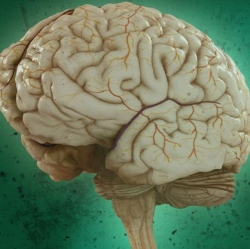
Currently, researchers study the human brain by inference. Because they can’t closely observe a living brain in the lab as its owner goes about his day, they do the next best thing, tracking blood flow and electrical activity as subjects perform various tasks.
Scientists, however, are now growing brain tissue in petri dishes to study neurons up close and personal. So far this lab-grown tissue can only grow in two dimensions, instead of the brain’s native three dimensions, and doesn’t form the typical segmented structure of grey matter (neuron cell bodies) and white matter (axon bundles).
However, in work funded by the National Institute of Biomedical Imaging and Bioengineering, David Kaplan of Tufts University and a team of researchers have created 3D brain-like tissue (using rat neurons) that is functionally and structurally similar to tissue in a living rat brain. Further, in contrast to prior methods, the tissue is long-lived, persisting for more than two months in the lab.
To demonstrate its potential as a research tool, the team used it to study the chemical and electrical changes induced by a traumatic brain injury and, separately, the changes due to a drug. Injuries and brain ailments affect the brain’s grey matter and white matter differently, so fully three dimensional tissue like theirs may enrich brain models.
